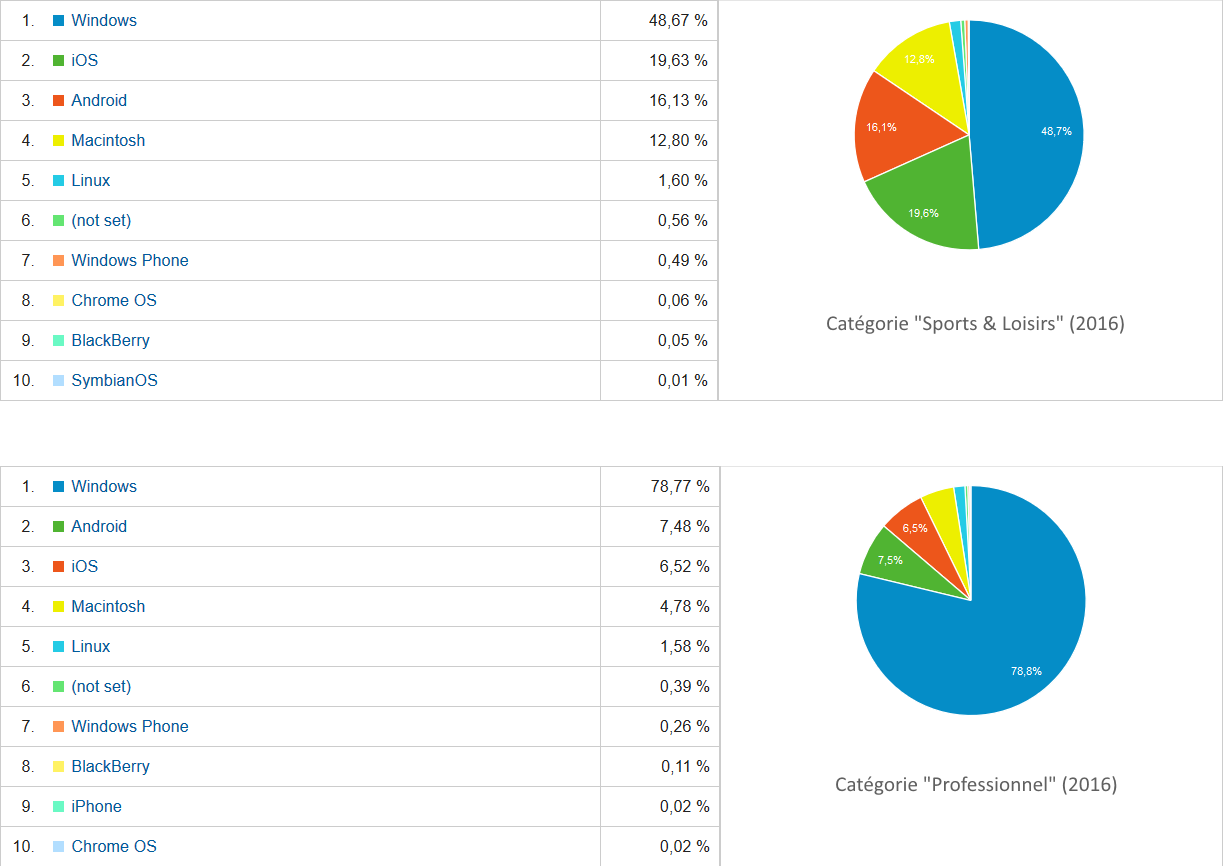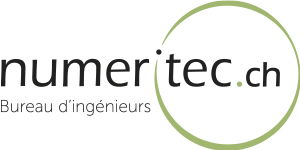Web - Responsive Design
What is "responsive design"
A website that is built using "responsive design" technology is able to better fit the terminal used : computer, tablet or smartphone. The goal is to optimize users experience, regardless of the media used to browse the pages. Usually, developpers use columns which are positioned next to each other when the website is displayed on a computer screen; and on top of each other when the website is displayed on a smartphone or a small tablet. Some more parameters also allow images and videos to be resizable.
Example of tablets and smartphones use
Situation in 2016 for a website in the category of sports & leisures compared to a website in the category of professional use.
The analysis of operating systems allows to define the terminal technology used by visitors. Smartphones are related to iOS, Android, Windows Phone and Blackberry.

It is observed that the access to the website in the category " Sports & Leisure " via smartphones is about 30 %. For websites in the category "Professional Use " this ratio is smaller.
Nevertheless, users experience on small screens ( smartphones and some tablets ) is important for any website since up to 30 % of visits may be concerned, that number is growing rapidly in recent years.
SEO (Search Engine Optimization)
Beginning 2015, Google announced that "mobile -friendly" websites will get some boost in search results. Initially, this parameter was affecting researches made with a smartphone only ( official announcement ). It is reasonably foreseeable that "mobile -friendly" properties will become increasingly important in coming months.
Updating a conventional website to responsive content
There are a few simple tips that convert a conventional website to fit the new terminals, tablets and smartphones.
Contact us to get a quotation in view to convert your website or to create a new website using "responsive design ".
